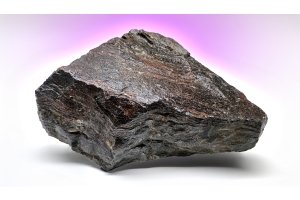
Frequency therapy is an alternative treatment method that is attracting increasing attention because of the way it focuses on restoring balance within the body through specific frequencies and vibrations. This guide will explain various techniques and devices as well as discuss the applications of frequency therapy in various fields such as health care and sports, among others. Its contribution to overall well-being will also be discussed.
What is Frequency Therapy?
Frequency therapy is an alternative healing method in which specific frequencies (vibrations or electromagnetic waves) are used to heal or balance the body. The underlying idea is that each organ, cell or biological system in a biological organism has its own frequency by which it functions naturally. Illness or imbalance is seen as a disturbance in this natural frequency.
How does Frequency Therapy work?
The therapy assumes that when a part of a biological organism (for example, a biological system consisting of cooperating cells) does not function properly, it is because the frequency of that part is disturbed. Using devices that emit specific vibrations, an attempt is made to restore the natural frequency of that part of the body so that it can once again function optimally.
Devices and techniques
There are several technologies and devices that can be used in frequency therapy, all of which fall under the heading of frequency therapy. Below we discuss some of them:
Bioresonance devices: This type of device measures and analyzes the body's frequencies and tries to correct abnormalities by sending counter frequencies, which would help the body regain balance.
Zappers: These devices were conceived and developed by Hulda Clark, who stated that many diseases can be caused by parasites and other pathogens. The Zappers, which she developed, emit pulses of different frequencies that allow pathogens to be destroyed, without harming healthy cells.
How to influence biological systems with frequencies
It is clear from the foregoing that there are several methods of transmitting frequencies to influence biological systems in this way, we summarize below the most common methods:
Electromagnetic fields: This is done by emitting electromagnetic waves through specially tuned antennas.
Plasma lamp: Plasma lamps use plasma to emit specific frequencies. The lamps create a plasma environment that produces waves at desired frequencies.
Current pulses: This includes the use of electrical stimulation. This involves applying electrical pulses to the skin or inside the body. The frequencies of these pulses can be adjusted to achieve different therapeutic effects.
In addition, sound therapy (sound waves and special music) and light therapy (specific light frequencies) are also sometimes used to transmit specific frequencies to achieve therapeutic effects. It should be noted that sound and light comprise only a small part of the total frequency spectrum.
Applications in health care
Frequency therapy has a variety of applications in health care, although it is primarily found within alternative and complementary medicine. Here are some of the main applications:
Frequency therapy can be used to relieve pain. Devices such as those used in frequency therapy send specific frequencies that are believed to affect pain receptors of biological systems, thus reducing pain sensation. This can be useful in chronic pain syndromes.
Frequency therapy is sometimes used to reduce inflammatory processes in biological organisms. The idea is that certain frequencies can reduce inflammatory responses by influencing cellular and molecular processes involved in inflammation.
There are also applications for frequency therapy in certain chronic conditions. The theory is that restoring proper frequencies can help relieve symptoms and improve the overall health of cells and cellular structures.
In rehabilitation, frequency therapy can be used to speed up the recovery process. This can be done by promoting cell regeneration and improving blood circulation in the affected area.
Mental and Emotional Health
There are claims that frequency therapy can help reduce stress and anxiety. It can do this by promoting a state of relaxation and restoring balance to the autonomic nervous system. The use of frequency stimulation can help regulate hormonal and neurotransmitter levels involved in stress responses.
Some therapies focus on improving sleep quality by using frequencies that promote relaxation and support a better sleep cycle.
Sports and performance enhancement
Frequency therapy is often used to speed muscle recovery after intense training or competition. Applying specific frequencies, such as with Pulsed Electromagnetic Field Therapy, is claimed to improve blood circulation and oxygen supply to damaged tissue. Some athletes also use frequency therapy to improve muscle performance. The idea is that stimulating cells with electromagnetic pulses or vibrations can improve the efficiency of muscle cells. And by promoting cell circulation and repair, frequency therapy can contribute to injury prevention.
In summary, one of the main benefits of frequency therapy for athletes is to shorten recovery time after intense exercise.
Supporting the immune system
Some therapies focus on strengthening the immune system by using frequencies that can promote the overall health of cells and cell structures. This can be done by improving overall cellular health.
Controversies and criticisms
It is important to note that although there is much anecdotal evidence and personal testimony about the effectiveness of frequency therapy, scientific support for this treatment method is limited because of the limited research that has been done from the mainstream medical community. It is often difficult for scientists to get funding and support to do research. The theories surrounding frequency therapy do not fit well within the current prevailing medical paradigm.
Also, frequency therapy falls outside the traditional realm of the pharmaceutical industry, where the focus is on medications and medical technologies that fit well into existing markets. Because frequency therapies are often difficult to market on a large scale, there is no commercial incentive to invest in expensive clinical research.
In short, although there is anecdotal evidence that frequency therapy may have benefits, it remains a difficult area for mainstream medicine to explore and controversial until more rigorous, science-based research becomes available. As a result, frequency therapy is currently primarily offered by alternative, complementary and holistic therapists.
When considering frequency therapy as part of your health strategy, it may be advisable to do so under the guidance of a qualified health care provider or therapist who can help integrate it in a safe and effective manner.
Future Developments
The future of frequency therapy is an interesting and dynamic area that continues to evolve.
There is likely to be increasing education and awareness of frequency therapy in the future, both among health care providers and the public, which may lead to greater acceptance and use. As a result, there may be an increasing focus in the future on combining frequency therapy with other treatments, such as traditional medicine, physical therapy or psychological therapies, in order to promote a holistic approach to health and well-being.
It is also expected that frequency therapy will increasingly be used in mental health care, for example through sound therapy or other forms of frequency-based interventions to treat stress and anxiety.
For questions, support or advice on frequencies, you can always contact us. We will be happy to help you further.




